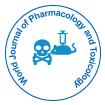In Silico Toxicology: Transforming Risk Assessment through Predictive Modeling
Received Date: Jan 01, 2025 / Published Date: Jan 30, 2025
Abstract
In silico toxicology has emerged as a powerful tool for revolutionizing risk assessment by leveraging computational modeling and machine learning techniques. This approach enables rapid and cost-effective prediction of chemical toxicity, reducing reliance on traditional animal testing. By integrating quantitative structure-activity relationships (QSAR), molecular docking, and artificial intelligence-driven algorithms, in silico models provide a more precise and mechanistic understanding of toxic effects. Furthermore, advancements in big data analytics and deep learning enhance the predictive accuracy and applicability of these models across various domains, including pharmaceuticals, environmental toxicology, and regulatory decision-making. As computational methods continue to evolve, in silico toxicology is set to become a cornerstone of modern toxicological assessments, ensuring safer chemical development and improved public health outcomes.
Citation: Jilin S (2025) In Silico Toxicology: Transforming Risk Assessment through Predictive Modeling. World J Pharmacol Toxicol 8: 290. Doi: 10.4172/wjpt.1000290
Copyright: © 2025 Jilin S. This is an open-access article distributed under the terms of the Creative Commons Attribution License, which permits unrestricted use, distribution, and reproduction in any medium, provided the original author and source are credited.
Select your language of interest to view the total content in your interested language
Share This Article
Open Access Journals
Article Tools
Article Usage
- Total views: 767
- [From(publication date): 0-0 - Nov 24, 2025]
- Breakdown by view type
- HTML page views: 573
- PDF downloads: 194
